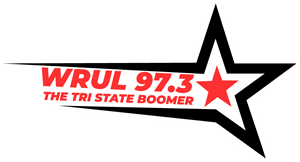The Illinois Department of Employment Security (IDES) announced today that the unemployment rate increased +0.2 percentage points to 5.0 percent in August and nonfarm payrolls decreased by -3,700 jobs over-the-month, based on preliminary data provided by the U.S. Bureau of Labor Statistics (BLS) and released by IDES. July job growth was revised down to show an increase of +600 jobs rather than the preliminary estimate of +2,100 jobs.
August’s monthly payroll drop kept over-the-year job growth well below the national average. While Illinois job growth has had its ups and downs since the beginning of the year, the 3-month trend shows average monthly gains of 1,100 jobs per month from June to August, while the six-month trend shows a -100 per month average job loss from March to August.
“The Illinois economy is stuck in neutral with hardly any growth over the past several months,” said IDES Director Jeff Mays. “As a result, this has caused the state to experience a rising unemployment rate over the past three months.”
“Illinois is working tirelessly to highlight our strongest assets – our strategic location and dedicated workforce – to bring more opportunity, competition and good paying jobs to our state,” said Illinois Department of Commerce and Economic Opportunity Director Sean McCarthy. “We need to couple that with lasting reforms and incentives to attract businesses and quality jobs in Illinois.”
In August, the three industry sectors with the largest gains in employment were: Trade, Transportation and Utilities (+6,600); Education and Health Services (+3,400); and Construction (+2,000). The largest payroll declines were in the following sectors: Leisure and Hospitality (-9,900); Professional and Business Services (-3,300); and Manufacturing (-3,000).
Over-the-year, nonfarm payroll employment increased by +23,600 jobs with the largest gains in these industry sectors in August: Professional and Business Services (+15,300); Financial Activities (+9,100); and Education and Health Services (+9,000). Industry sectors with the largest over-the-year declines include: Trade, Transportation and Utilities (-5,800); Government (-3,100); and Construction (-3,000). The +0.4 percent over-the-year gain in Illinois is about one-fourth as strong as the +1.4 percent gain posted by the nation in August.
The state’s unemployment rate is +0.6 percentage points higher than the national unemployment rate reported for August 2017, which increased to 4.4 percent. The Illinois unemployment rate is down -0.8 percentage points from a year ago when it was 5.8 percent. At 5.0 percent, the Illinois jobless rate stands -0.7 percentage points lower than January 2017.
The number of unemployed workers increased +4.8 percent from the prior month to 323,100, down -14.2 percent over the same month for the prior year. This was the third consecutive over-the-month gain in the number of unemployed persons. The labor force decreased -0.4 percent over-the-month and declined by -1.4 percent in August over the prior year. The unemployment rate identifies those individuals who are out of work and are seeking employment. An individual who exhausts or is ineligible for benefits is still reflected in the unemployment rate if they actively seek work.
To help connect jobseekers to employers who are hiring, IDES’ maintains the state’s largest job search engine IllinoisJoblink.com (IJL). IJL recently showed 64,481posted resumes with 180,829 jobs available.
Seasonally Adjusted Unemployment Rates
Illinois Seasonally Adjusted Nonfarm Jobs – by Major Industry
• Monthly 2012 – 2016 labor force data for Illinois, and all other states, have been revised as required by the U.S. Bureau of Labor Statistics (BLS). The monthly historical revisions to state labor force estimates reflect new national benchmark controls, state working-age population controls, seasonal factors, as well as updated total nonfarm jobs and unemployment benefits claims inputs. Illinois labor force data were also smoothed to eliminate large monthly changes as a result of volatility in the monthly Census Population Survey (CPS) and national benchmarking. For these reasons, comments and tables citing unemployment rates in previous state news releases/materials might no longer be valid.
• Monthly seasonally adjusted unemployment rates for Illinois and the Chicago-Naperville-Arlington Heights Metropolitan Division are available here: Illinois & Chicago Metropolitan Area Unemployment Rates
• Monthly 1990 – 2016 unadjusted and seasonally adjusted nonfarm payroll data for Illinois have been revised. To control for potential survey error, the estimates are benchmarked annually to universal counts derived primarily from unemployment insurance tax reports.
• Not seasonally adjusted jobs data with industry detail are available at Not Seasonally Adjusted Jobs. “Other Services” include activities in three broad categories: Personal and laundry; repair and maintenance; and religious, grant making, civic and professional organizations. Seasonally adjusted employment data for subsectors within industries are not available.










